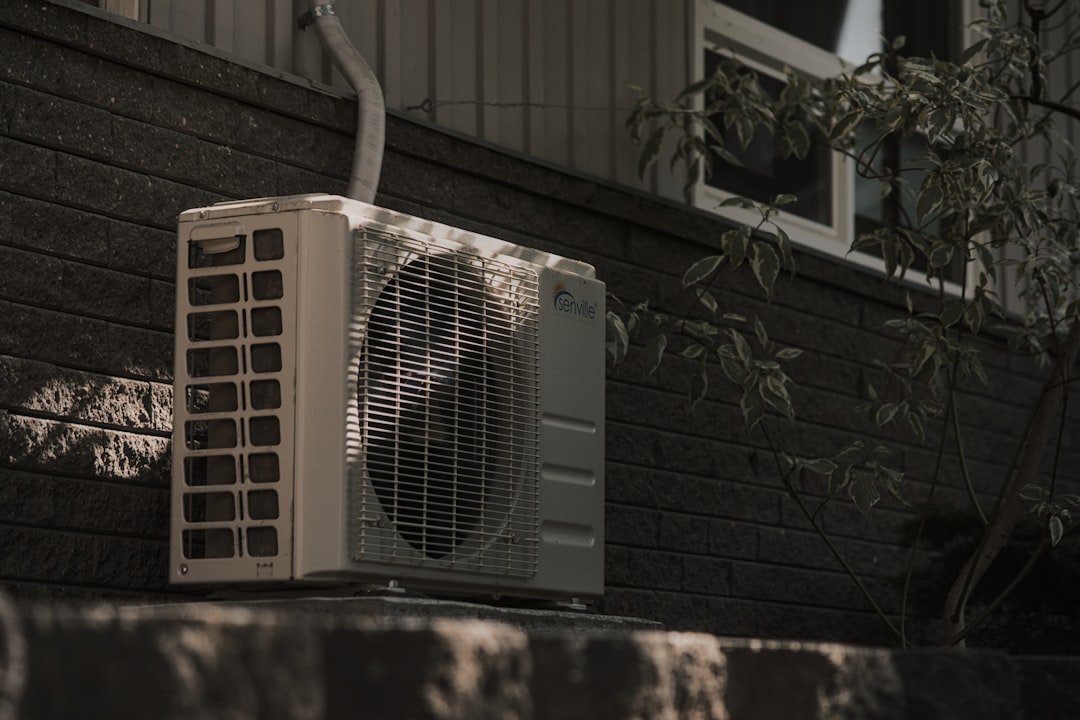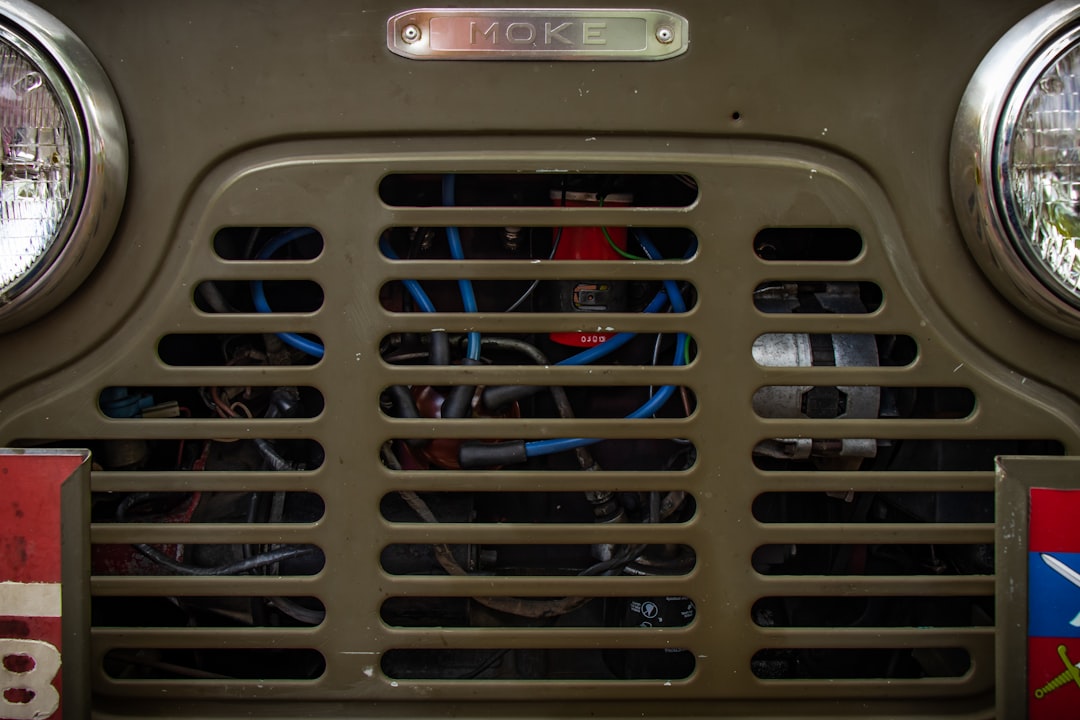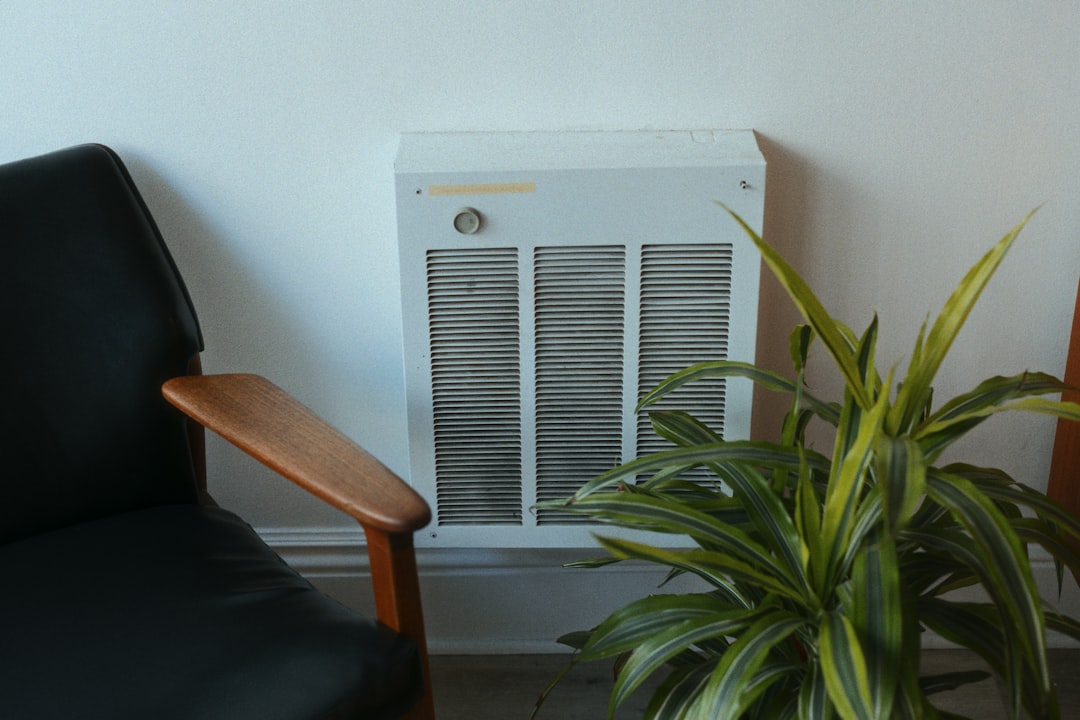

Engage prospects with a scan and streamline customer engagement with FREE QR code marketing tools by Sona – no strings attached!
Create a Free QR CodeFree consultation

No commitment

Engage prospects with a scan and streamline customer engagement with FREE QR code marketing tools by Sona – no strings attached!
Create a Free QR CodeFree consultation

No commitment
The evolving landscape of air conditioning cleaning services is transforming how businesses connect field technicians, customers, and back-office systems. While analog processes like printed service checklists and paper invoices have long dominated the industry, these legacy methods often create friction in communication, slow down follow-ups, and make it difficult to accurately track technician workflows. Many providers also miss out on high-value prospects because these interactions are not captured digitally, leading to missed repeat business and lost upsell opportunities.
Air conditioning cleaning companies now face rising expectations for faster, more transparent, and data-driven service delivery, all crucial to outperforming in a competitive market. QR codes have emerged as a seamless, innovative solution for bridging the physical-to-digital gap in air conditioning cleaning services. With a simple scan, technicians and customers alike can access booking portals, instant service verification, cleanup checklists, pricing breakdowns, and feedback forms, without the hassle of app downloads or complex software. For a broader foundation on deployment, see qr codes in marketing.
By strategically deploying QR codes, air conditioning cleaning service providers can streamline technician operations, gather actionable insights previously lost in paper-based workflows, and boost both customer satisfaction and retention. This guide explores how QR codes can drive real business outcomes for HVAC professionals and service business leaders, including maintaining accurate customer data, ensuring consistent messaging, and reducing lost opportunities from incomplete tracking. See Sona QR’s product overview for how this works in practice.

Many air conditioning cleaning businesses face ongoing challenges with missed follow-ups, lost paperwork, and incomplete data capture, factors that can result in high-value prospects not being tracked in their CRM, leading to lost sales and dissatisfied customers. QR codes eliminate bottlenecks between offline service visits and digital workflows by transforming point-of-service touchpoints into interactive gateways that drive measurable action. With each scan, you can automate appointment scheduling, validate completed tasks, capture instant Google Forms QR feedback, and surface upsell or maintenance contract opportunities at precisely the right moment. For ideas tailored to field services, see these contractor QR tips.
The most effective deployments begin with a clear definition of outcomes, then connect those outcomes to specific scan actions. Replace analog artifacts like printed manuals, paper appointment forms, and after-service checklists with scannable digital experiences for both technicians and customers. When every interaction is logged and actionable, operations speed up, errors decline, and your team can focus on delivering excellent service instead of chasing paperwork. Start creating QR codes for free.
For example, instead of mailing paper reminder cards that are often discarded, QR codes placed on invoices enable customers to instantly book their next air conditioning cleaning appointment. The activity is automatically attributed to the correct technician or account for accurate reporting. For connecting offline interactions to revenue, use this offline attribution guide. Modern platforms can automate code creation, CRM syncing, and analytics so the data is captured without extra work from your team.

The field-driven nature of air conditioning cleaning services exposes a persistent operational challenge: limited visibility into who is engaging with your business and how they are progressing toward purchase. Because so much of the customer journey happens in person or through paper handoffs, potential leads and signs of purchase intent can remain anonymous and slip through the cracks. Even engaged customers, if not properly tracked, can result in missed upsell, cross-sell, or service renewal opportunities. For industry-specific tactics, check Sona QR’s HVAC marketing guide.
QR codes solve for speed, simplicity, and traceability at low cost. They are an ideal bridge between in-home service visits and your digital systems. By enabling one-scan access to booking, payments, and support, QR codes reduce the friction that typically slows down follow-ups and obscures attribution. They also allow dynamic updates to content after printing, which is useful when promotions or pricing change seasonally.
For example, a QR code on an appointment card can direct customers to maintenance reminders, review submission, or a filter reorder page. Every scan action feeds engagement data back to your CRM, which enables timely, relevant follow-up and smarter segmentation. To grow social proof, prompt reviews via a Google reviews QR.
Air conditioning cleaning providers often struggle with generic messaging and incomplete customer profiles. QR codes enable targeted, moment-specific interactions that capture preference data and streamline next steps. Selecting the right QR format for each task ensures the experience is quick and intuitive.
Dynamic QR formats are preferred for most service use cases because they allow you to change the destination and collect analytics without reprinting materials. If you print a seasonal flyer for duct cleaning, for instance, you can later update the destination to a fall maintenance special while keeping the same code in circulation. Centralized platforms like Sona QR make it simple to generate, manage, and measure these formats from one dashboard.

Air conditioning cleaning services can unlock growth by placing QR codes where customer intent naturally peaks. The key is to identify surfaces and moments that are already part of your workflow, then make those touchpoints shoppable, bookable, and trackable. When customers can take action at the point of interest, conversion rates rise and follow-through improves.
Look for opportunities that convert passive engagement into measurable interactions. Vehicle wraps, invoice footers, filter packaging, and in-neighborhood signage all serve as high-visibility placements. Each scan captures data that reveals what customers want and when they want it, which allows you to optimize offers and allocate technician resources.
These placements convert static print into interactive gateways that identify and nurture high-value leads across the HVAC service journey. Over time, scan data highlights which placements deliver the most revenue, guiding smarter budget decisions. For sector context, explore HPAC’s perspective on HVAC QR strategies.

The following use cases address common challenges like inconsistent messaging, limited visibility into customer activity, and missed opportunities for upsell or renewal. Align each use case with a single, clear call to action so customers know exactly what happens after a scan.
Each use case should map back to measurable outcomes. Service verification reduces no-entry incidents and callbacks, feedback capture raises average rating scores and drives social proof, and maintenance reminders increase return visits and contract renewals. By tagging each QR to a technician, service line, or location, you gain the granularity needed to personalize communications and prioritize high-value accounts.
Every QR scan is an intent signal. With the right tagging and routing, you can segment audiences automatically and tailor follow-ups based on context. This transforms a simple scan into a structured data point that fuels smarter retargeting and customer lifecycle management.
Think of the customer journey as a series of scanable touchpoints. Use distinct QR codes for awareness, consideration, and post-purchase stages, then sync engagement back to your CRM. This creates behavior-based audiences that you can nurture across email, SMS, and ads with message relevance that matches their stage. For a strategic foundation, see Sona’s Essential Guide to Intent Data.
Integrate scan events into platforms like HubSpot, Salesforce, or Meta Ads to activate these segments quickly. With Sona QR, each code can carry metadata for channel, technician, and location, making it easier to see who scanned, where they scanned, and what action they took next. For air conditioning cleaning, useful audience distinctions include homeowners vs. property managers, first-time service vs. contract subscribers, and emergency requests vs. scheduled maintenance.
QR codes connect offline assets to your digital marketing ecosystem, creating a cohesive customer experience and a single source of truth for performance. By placing scannable calls to action across print, email, social, and events, you reduce friction and create measurable pathways from interest to booking.
Weave QR codes into the channels your customers already use. In air conditioning cleaning, that means invoices, door hangers, neighborhood mailers, local events, and service vans. Each placement should drive a specific action, and each action should be trackable.
With a centralized platform like Sona QR, you can manage all codes, monitor performance by channel, and sync scan activity into your CRM and ad platforms. QR codes become an always-on onramp to your digital engine, adding a new layer of measurable engagement to historically opaque channels.
Launching a QR campaign is straightforward when you anchor it to a business outcome and design the experience around a single action. The following steps will help you plan, deploy, and optimize a high-impact program for air conditioning cleaning services. Start with one use case and one channel, then expand once you prove a baseline conversion rate.
A well-executed QR rollout aligns the code, the destination, and the follow-up workflow. Each scan should lead to a benefit-driven landing page and trigger a next step inside your CRM or marketing automation platform. This is how you turn scans into booked jobs, reviews, and contract renewals.
Define what you want to achieve and where the friction currently exists. Anchor the campaign to a specific metric so you can tell whether the program works and where it needs refinement.
Choose the format and flexibility you need. For most service scenarios, dynamic QR codes are the right choice since they allow edits and capture analytics without reprinting.
Presentation matters. The right visual treatment and copy can significantly improve scan rates. Test in real environments to ensure scannability.
Roll out to the placements with the greatest likelihood of engagement first, then expand. The strongest performers in air conditioning cleaning are typically billing assets and equipment labels.
Use analytics to understand what is working and why. Iterate on creative, placement, and destination based on evidence rather than assumptions.

A recurring concern in HVAC operations is the limited visibility into which touchpoints drive booked appointments, reviews, and repeat business. Traditional measurement tools often stop at web analytics and do not capture offline triggers or technician-level attribution. With QR codes powering the offline-to-online bridge, you can finally tie scan behavior to revenue and technician performance.
The goal is to track every scan from first interaction to closed sale. This means capturing the who, where, and when of each scan, then linking that activity to bookings, payments, and renewals inside your CRM. The more granular the attribution, the more surgical your optimizations can be. You can shift budget toward the channels, neighborhoods, and technicians that demonstrably move the needle.
Sona QR captures real-world engagement while Sona is an AI-powered marketing platform that turns first-party data into revenue through automated attribution, data activation, and workflow orchestration. Explore Sona’s account identification guide to connect scans to known buyers and drive efficient follow-up.
Scaling your QR program requires a mix of disciplined tracking, field training, and creative deployment. Start with what is already working, then layer in new use cases that map to distinct moments in the customer journey. Over time, your print materials, uniforms, and equipment stickers become a measurable acquisition and retention engine.
Technicians play a pivotal role in driving QR adoption. When scanning is part of the service ritual, engagement surges and follow-ups become automatic. Equip technicians with a simple script and reward participation with performance-based incentives tied to reviews or booked follow-ups. For inspiration, try these practical QR campaign tips.
Example: Feedback QR codes on technician badges encourage spontaneous customer reviews at the end of a visit, lifting your star rating and improving search visibility for “air conditioning cleaning service” queries. Likewise, QR codes on AC filter packaging drive measurable reorders and reveal which neighborhoods are most engaged, informing where to pilot subscription filter deliveries or promote maintenance plans. Implement with stickers and labels.
Few fields rely more on bridging offline and online workflows than air conditioning cleaning services. Yet many providers still wrestle with missed follow-ups, outdated contact records, and overlooked upsell opportunities. QR codes change the equation by making every invoice, technician badge, and equipment label a digital entry point. The result is faster action for customers, richer data for teams, and far better attribution across the service journey.
With thoughtful deployment and robust analytics, air conditioning cleaning businesses can transform everyday interactions into compounding advantage. QR codes multiply retargeting and upsell opportunities, create a consistent data-driven experience from first inquiry through ongoing maintenance, and surface actionable signals that keep high-fit prospects from slipping through the cracks. When combined with a centralized platform like Sona QR’s product overview for creation and tracking, plus integrations into your CRM and ad tools, you can manage campaigns at scale and prove impact from scan to revenue.
In the months ahead, prioritize placements that align with high-intent moments like billing and on-equipment reminders. Standardize CTAs, train technicians, and automate follow-up so that every scan advances the relationship. By adopting QR codes strategically, air conditioning cleaning providers empower technicians, enhance customer convenience, and unlock measurable returns. The winners in this space will be those who convert every service call into a data-driven opportunity for upselling, retention, and durable differentiation.
QR codes have revolutionized the air conditioning cleaning services industry by streamlining technician workflows and enhancing service quality. From instant access to equipment manuals and maintenance history to facilitating quick reporting and follow-ups, QR codes empower technicians to work smarter and faster, boosting customer satisfaction and operational efficiency. Imagine technicians arriving on-site fully equipped with all relevant data at their fingertips, reducing errors and accelerating service turnaround times.
With Sona QR, you can create dynamic, trackable QR codes that update instantly without reprinting, enabling seamless communication between customers and technicians while capturing valuable engagement insights. This means better job tracking, improved customer experiences, and a measurable increase in repeat business. Start for free with Sona QR today and transform every scan into a seamless service interaction and a loyal customer relationship.
The article does not specify an exact cleaning frequency but emphasizes using QR codes on equipment tags and maintenance reminders to encourage regular cleanings and replacements.
Regular cleaning improves service efficiency, reduces no-entry incidents and callbacks, drives repeat appointments, increases customer satisfaction, and supports upsell and contract renewal opportunities.
While the article focuses on service providers, it suggests QR codes can link customers to digital cleaning guides and maintenance tips accessible via scan.
The article does not detail signs of needed cleaning but highlights that maintenance reminders and filter packaging QR codes help customers stay informed about when to clean or replace parts.
The article does not provide specific pricing information for professional air conditioning cleaning services.
QR codes streamline technician workflows, enable instant booking and service verification, gather customer feedback, reduce paperwork, enhance tracking and attribution, and boost customer engagement and retention.
Effective placements include technician uniforms and badges, invoices and receipts, air conditioning units and filter packaging, vehicle wraps, door hangers, flyers, and neighborhood signage.
Common formats include web links for booking and guides, vCards for contact sharing, SMS and email pre-filled messages, Wi-Fi access codes for diagnostics, and app download links, with dynamic QR codes preferred for flexibility and tracking.
They can measure scan frequency, conversion rates, technician attribution, customer engagement, and revenue impact by integrating QR scan data with CRM and marketing platforms.
They should define clear goals, select high-intent touchpoints and single actions, choose appropriate QR code types, design and test codes for usability, deploy on high-impact channels, and continuously track and optimize performance.
QR codes enable maintenance reminders, easy booking of follow-up cleanings, feedback collection, and personalized follow-ups that encourage repeat business and contract renewals.
Technicians can incorporate QR code scanning into their service routine, use scripts to encourage customers to scan for reminders or feedback, and be incentivized based on review submissions and booked follow-ups.
Yes, dynamic QR codes allow content and destinations to be updated post-deployment without reprinting, which is useful for seasonal promotions or pricing changes.
QR codes solve issues with missed follow-ups, lost paperwork, incomplete data capture, anonymous leads, and inefficient offline-to-online transitions.
QR scan data can be synced to CRM and marketing automation platforms to trigger workflows like review requests, contract renewals, targeted campaigns, and provide attribution for revenue and technician performance.
Use Sona QR's trackable codes to improve customer acquisition and engagement today.
Create Your FREE Trackable QR Code in SecondsJoin results-focused teams combining Sona Platform automation with advanced Google Ads strategies to scale lead generation

Connect your existing CRM

Free Account Enrichment

No setup fees
No commitment required

Free consultation

Get a custom Google Ads roadmap for your business






Launch campaigns that generate qualified leads in 30 days or less.
